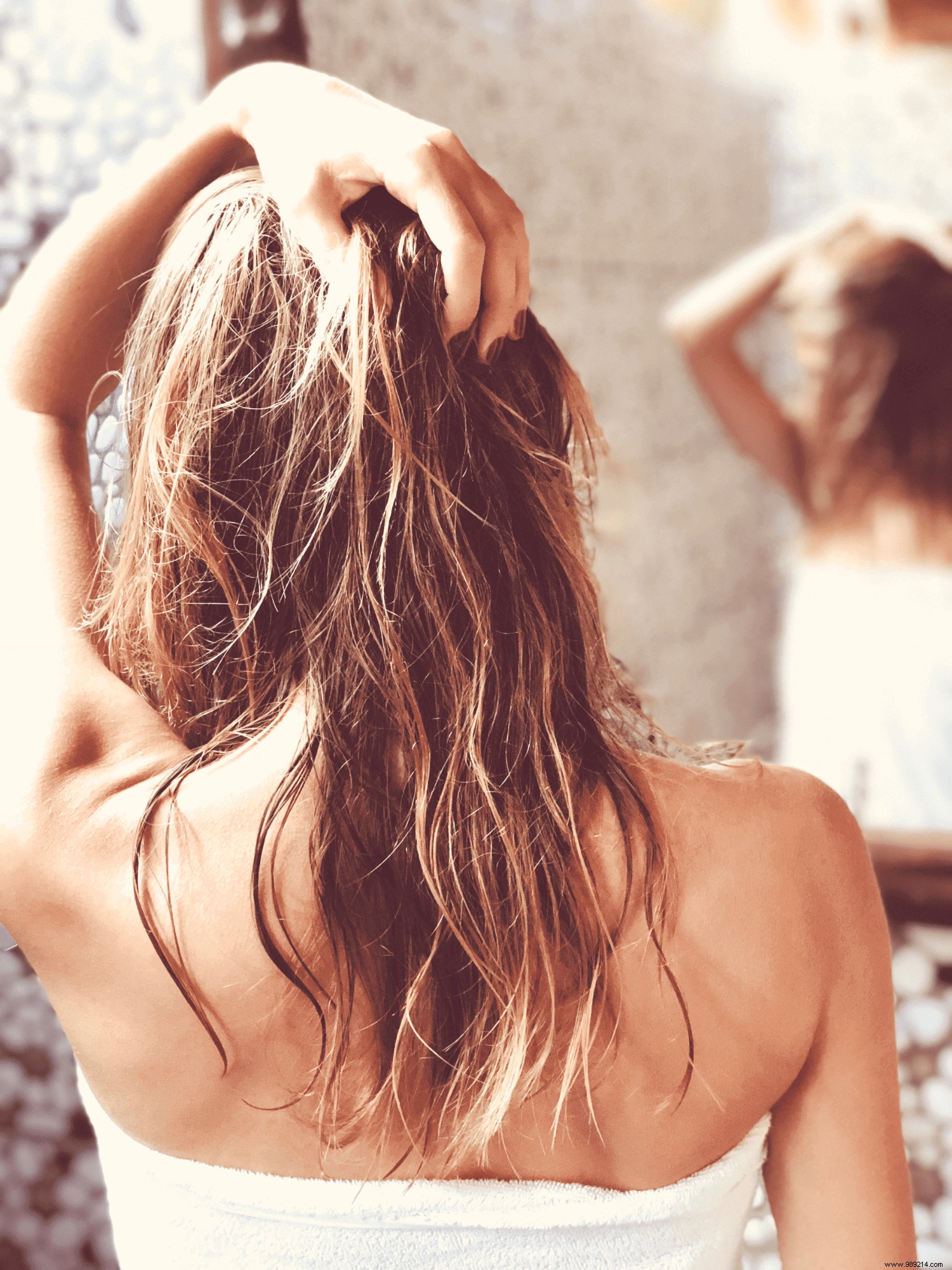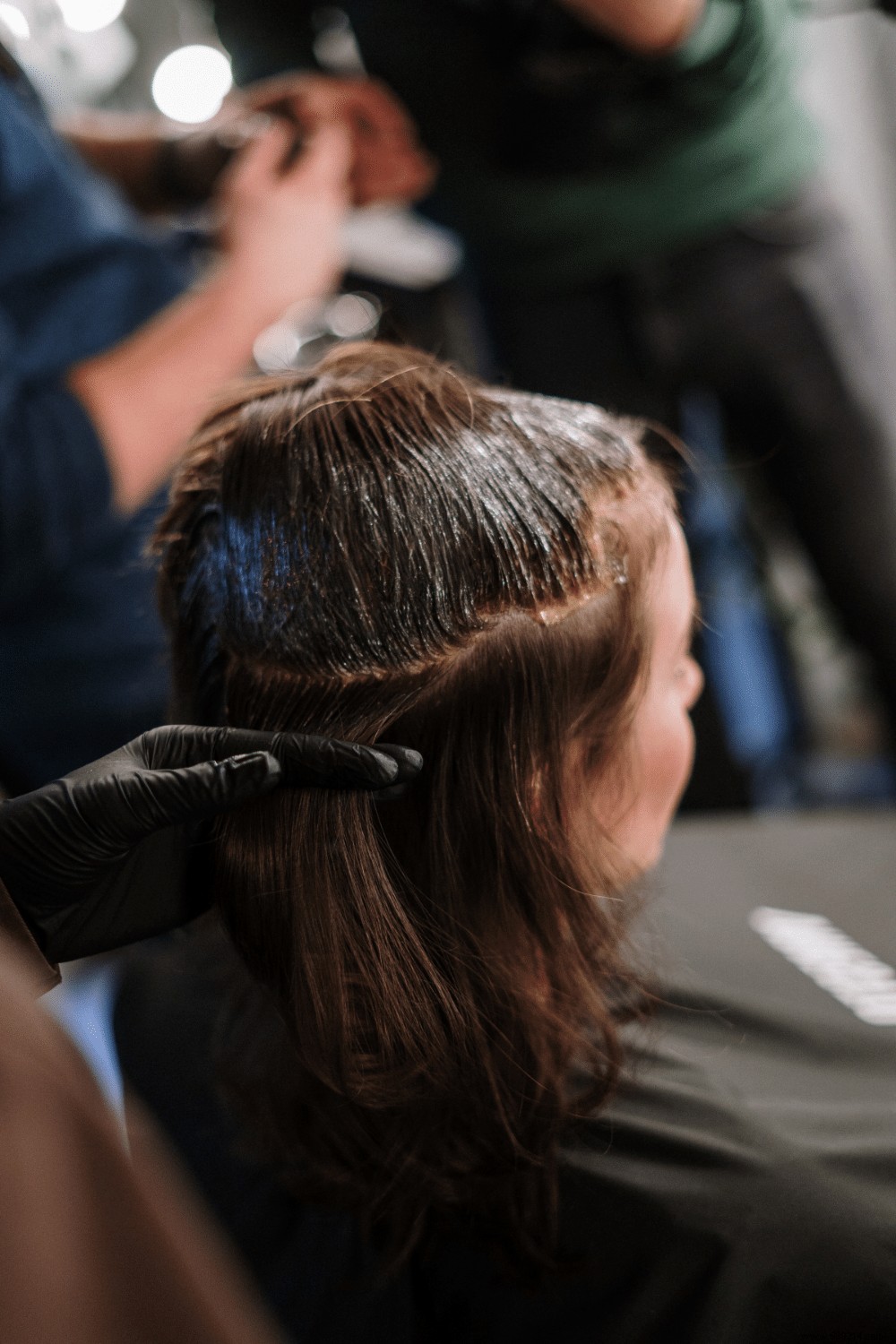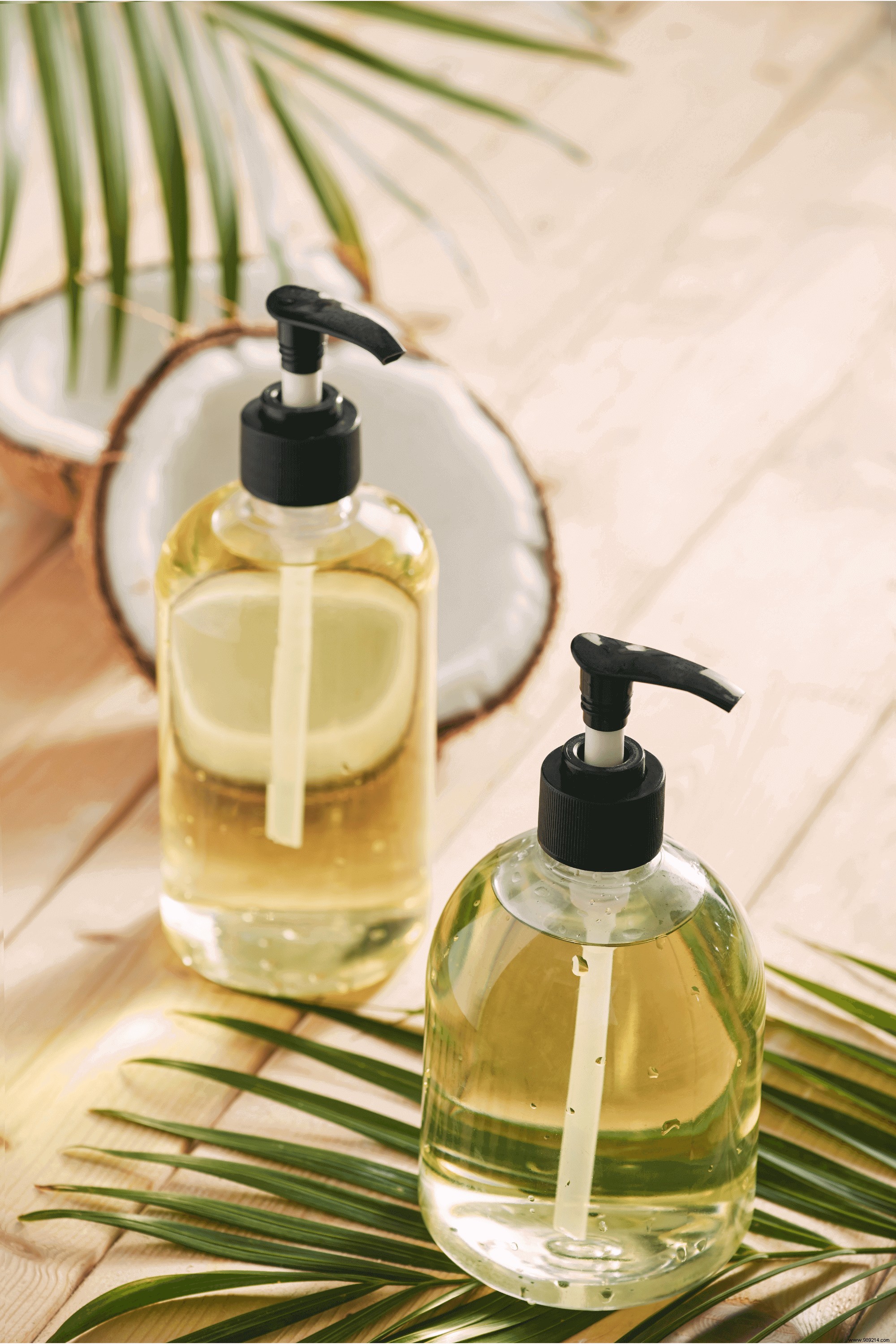Chemical dyes tend to weaken the hair. Less protected, they dry out more quickly and their shine and suppleness decrease. Dull and tired, the color loses intensity. How to preserve your color ? Shampoos, conditioners, masks, oils, etc., there are many formulas to repair damaged hair. How to care for colored hair ? Argan oil, coconut oil, castor oil, etc., how to moisturize dry hair? Softer and less harmful, vegetable coloring is a plant-based alternative, ideal for coloring your hair. Why choose a vegetable coloring?
The hair coloring is a complex process that changes the structure of hair fibers. In practice, the hair has two distinct parts, namely the root, implanted in the scalp and the hair shaft . The latter corresponds to the visible part of the hair and consists of three concentric layers:
Thus, whether chemical or vegetable, colorings modify the structure of the hair. However, they have modes of action that vary depending on their formulation and composition.

The synthetic coloring allows you to permanently change the color of the hair. However, it is an aggressive process that changes the internal structure of hair fibers.
Widely used in classic hairdressing salons, it can be harmful and irritating. Indeed, the first step in chemical staining is to open the scales of the cuticle which protects the hair shaft. This process weakens the envelope of the hair to allow chemicals to penetrate. The objective is to lighten the natural color to make room for synthetic pigments and increase the chances of successful coloring. After this last step, the hair has its final color.
Some chemical-based formulations may cause irritation, scalp burns or allergies . In addition, the presence of endocrine disruptors can have a significant impact on the body and lead to hormonal imbalances. Note that hair colors that have the mention "ammonia-free" often contain monoethanolamine. Derived from ammonia, this molecule can also be toxic to the body.
Finally, the hair fiber discoloration is obtained using hydrogen peroxide, commonly known as " hydrogen peroxide ". By inhibiting the synthesis of colored pigments, this component alters the hair fiber and weakens the cuticle.
The plant dyes are made from a mixture of water and powdered plants. Soft and natural, this type of process does not modify the internal structure of the hair. Indeed, instead of penetrating inside the cuticle, the coloration coats the hair fiber with a protective layer sheet . Sheathed, the hair is softer and gains in thickness. Real care, it brings volume, suppleness and shine to your hair.
Finally, less aggressive than synthetic colorings, vegetable colorings do not contain chemicals. Their formulation based on natural ingredients respects health and the environment. Henna, chamomile, lemon juice, indigo, etc., there are many natural alternatives to color your hair!

The production of chemical stains tends to alter the hair fibre . Weakened hair is damaged more quickly. Over time, they become porous and are more sensitive to their environment. Indeed, synthetic hair colors contain chemicals that lift the cuticle scales to allow the pigments to penetrate. Less protected, the color loses intensity and the hair looks dull and tired . To preserve their color, it is essential to hydrate and nourish them deeply.
To take care of colored hair, the first step is to avoid shampoos formulated with sulfates . The most common are sodium laureth sulfate and ammonium lauryl sulfate. Indeed, these elements are surfactants whose role is to eliminate excess sebum and cleanse the scalp. However, they tend to dry out the lengths and remove color pigments. Prefer organic shampoos, without sulphates.
To maintain the hair after coloring, the choice of shampoo is essential. In addition to sulfates, it is also advisable to avoid formulations containing paraben , ammonia , formaldehydes , conservatives or synthetic perfumes . The goal is to find a cleansing base that is both gentle and effective, respecting the hair fibers without dulling the color. Finally, the realization of complementary care based on vegetable oils is an essential gesture to preserve the radiance of the color.
One of the tricks to take care of colored hair is to use a shampoo with antioxidant action . The objective is to counter the oxidation generated by the coloring by creating an acidic environment. This type of process promotes the closure of the hair scales, preserves the pigments and fixes the color. Coupled with active plant ingredients such as lavender, wheat proteins or aloe vera, it strengthens the hair fibres. Soft, visibly stronger hair.

Often weakened, colored or highlighted hair has a porous structure that accentuates the dryness of the lengths . Thus, the ideal is to use specific shampoos for colored hair, enriched with antioxidants and vitamins.
Essential for healthy hair, vitamin E preserves color vibrancy and smoothes the scales of the hair shaft . Undeniable sources of antioxidants, red fruits provide essential minerals for hair full of vitality. Honey or shea butter deeply nourishes the hair and repairs damage caused by chemicals.
Finally, space out the shampoos ! Drier, colored hair greases less quickly, so there is no need to wash it too regularly. Among the suitable shampoos, we recommend:
Using a conditioner for colored hair limits the risk of the scalp drying out and moisturizes the lengths. Just like shampoo, it is essential to opt for solutions based on natural ingredients, without harmful components. Nourishing, repairing, moisturizing, radiance booster, etc., be sure to select treatments adapted to the needs of your hair.
Applying a mask to colored hair nourishes it deeply. Most of the time, performing successive colorings dries out the lengths and promotes the appearance of split ends. To fight against dehydration, solutions enriched with aloe vera or wheat proteins are very suitable. To revitalize the hair, masks based on bananas, eggs or soy are particularly recommended!
For dry or damaged hair, the ideal is to make an oil bath . However, not all of them have the same properties:castor oil, avocado oil, argan oil, it's up to you to choose the one that suits you best. For optimal effectiveness, apply the oil to damp hair , then cover with a warm towel. Thanks to the heat, the scales open and allow the material to enter the hair. Leave on for a few minutes to several hours, then rinse thoroughly. Be careful not to use too much oil so as not to suffocate the scalp. Finally, it is best to perform this type of treatment just before a colouring , at the risk of dulling the color.
Hair is made up of three distinct layers, each of which has a very specific role. However, the realization of successive colorings is likely to weaken them and harm the good health of the scalp . To revitalize the hair fibers, the ideal is to use specific shampoos and conditioners. Vitamin E, antioxidants, vegetable oils, etc., solutions based on natural ingredients gently care for colored hair. Finally, the application of masks provides essential nutrients for soft and shiny hair!